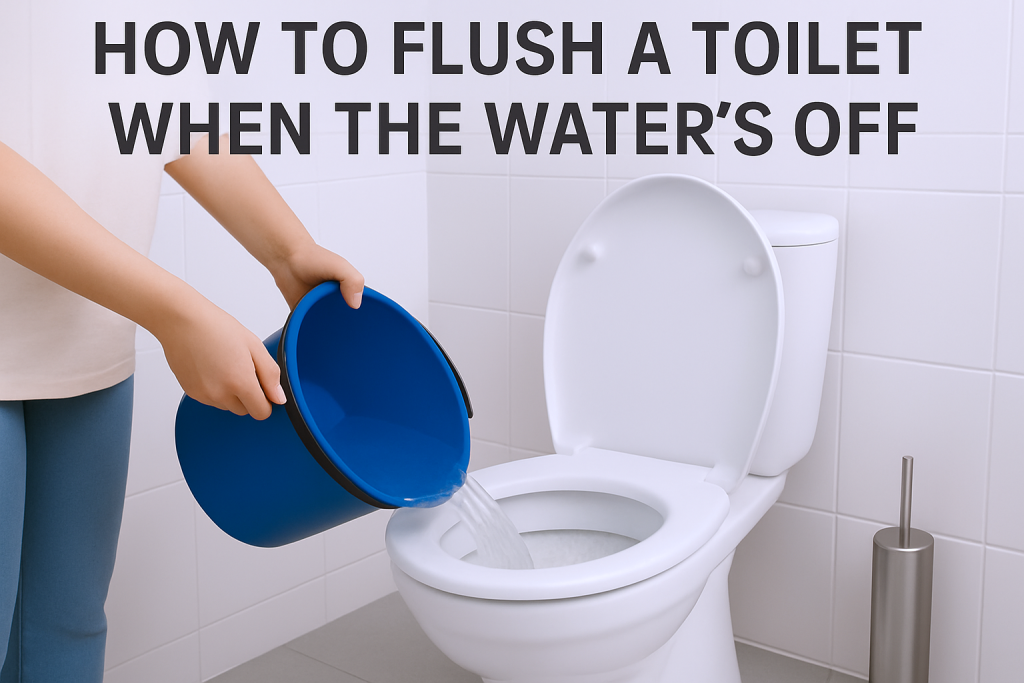Sometimes Life Gets Weird Like That!
Let’s set the scene: You’re at home, minding your business, and you head into the bathroom. You do your thing, reach for the handle, and—nothing. Nada. No refill, no swish, just a dry, uncooperative bowl of awkwardness.
Turns out, the water’s off.
Maybe there’s a plumbing issue, a broken main, or the city’s doing maintenance. Or maybe you forgot to pay your bill (no judgment). Either way, you’ve now got a toilet full of… memories… and no idea what to do.
Here’s the good news: You can still flush a toilet when the water is off. It’s a little DIY, a little old-school, and a whole lot practical. Whether you’re dealing with a short-term water outage, a camping setup, or prepping for emergencies, this guide will walk you through how to make it work—no running water required.
First, How Does a Toilet Normally Flush?
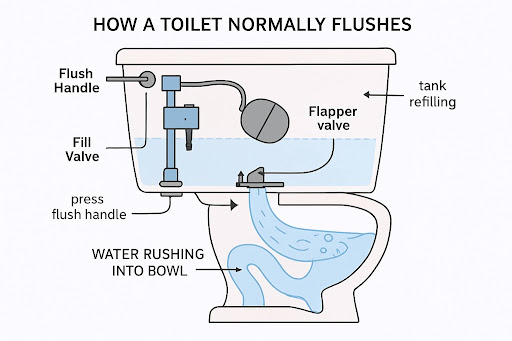
Understanding the basics helps you hack the system. A typical flush toilet works like this:
- You push the handle.
- Water rushes from the tank into the bowl.
- The force of the water pushes waste through the trap and into the drain line.
- The tank refills itself.
Key point: It’s gravity and water volume that make the flush happen—not pressure from the pipes.
So even if the water’s not running, you can manually replicate that flush as long as you have access to water (in some form) and a bucket. Which brings us to…
The Bucket Flush Method
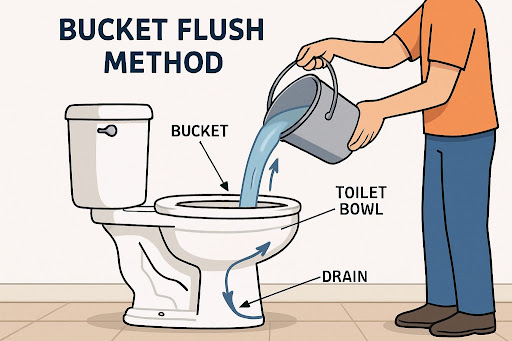
This is the go-to move when your toilet tank won’t refill.
What you’ll need:
- A bucket (at least 1–2 gallons)
- Water (any clean-ish source: bathtub, rain barrel, melted snow, pool, bottled)
Here’s how to do it:
- Fill your bucket with about 1–2 gallons of water.
- Stand over the toilet bowl.
- Pour the water in quickly but steadily into the bowl—not the tank. The sudden rush will mimic the effect of a regular flush.
- Watch the magic happen. The waste and water should drain away like a normal flush.
Boom. That’s it. Your toilet is now functioning off-grid.
Pro Tips for the Bucket Flush
- Don’t dribble it in slowly. You need that whoosh of water to get the siphon action going in the bowl.
- Use a container with a spout (like a watering can or pitcher) if you want more control.
- You can reuse graywater. Leftover shower water, old dishwater, even rainwater is fine for flushing. Just don’t use anything oily or chunky.
What If You Want to Refill the Tank Instead?
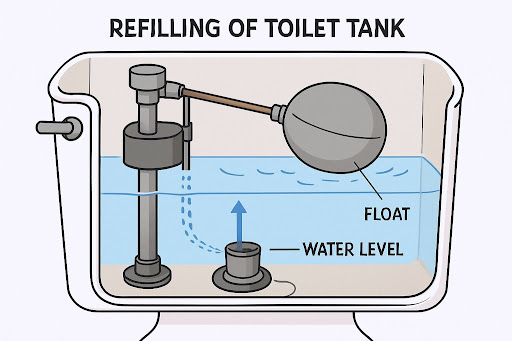
Sometimes, you might prefer to keep your toilet flushing the “normal” way (handle and all). That works too—as long as you can manually refill the tank.
How to do it:
- Remove the tank lid.
- Pour water directly into the tank until it hits the fill line (usually about halfway up).
- Use the handle to flush.
This method uses a little less water and gives you a familiar flushing experience—but it takes more time per flush. Choose your adventure.
What NOT to Do
- Don’t try to flush when there’s no water in the bowl. That just leaves a dry pipe and a mess.
- Don’t pour too much water too fast. You want a solid pour—not a splashy flood that overflows the bowl.
- Don’t assume it’s broken. When the water’s off, your toilet isn’t broken—it’s just thirsty.
Where Can I Get Water if the Supply’s Off?
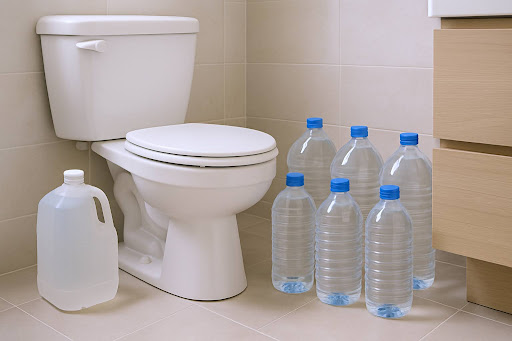
If the water’s been off long enough that you’ve already used up what’s in the pipes, you’ll need to get creative.
Here are some emergency water sources:
- Your bathtub (if you filled it ahead of time)
- Water heater tank (there’s a drain valve at the bottom!)
- Rainwater collector or outdoor barrel
- Pool or hot tub water
- Melted ice or snow
- Old bottled water you forgot you had
Just remember—if you’re using water that’s not potable (aka safe to drink), it’s fine for flushing, but not for brushing your teeth or cooking.
Bonus Tip: Emergency Prep Like a Pro
If you live in an area prone to water outages (think hurricanes, earthquakes, winter storms), here’s how to always be ready:
- Keep a couple gallons of water stored specifically for flushing.
- Fill your bathtub when you hear a storm or outage is coming.
- Invest in a WaterBOB or similar large tub liner to store emergency water in your bathtub.
- Keep a clean bucket with a lid handy for bathroom use. Label it “TOILET ONLY” if you want to avoid accidental soup-making situations.
Compost Toilets & Dry Alternatives
If the water outage is going to last a while—or you’re camping, off-grid, or in a van—you might want to look into:
- Compost toilets
- Portable dry flush toilets
- DIY sawdust bucket systems
These are a whole different beast, but they work great in water-scarce situations. Worth exploring if you’re planning a long-term setup.
Bottom Line: You’ve Got Options
So yeah—flushing a toilet when the water’s off might not be glamorous, but it’s totally doable.
To recap:
- You can flush a toilet with a bucket and 1–2 gallons of water.
- You can refill the tank manually for a “regular” flush.
- You don’t need pressurized plumbing—just water and gravity.
- Always prep if you suspect a water outage.
- Don’t panic. Seriously.
You’re now armed with knowledge that 90% of people don’t think about until it’s too late. And next time someone panics mid-outage, you can be the toilet-flushing hero no one saw coming.
Flush like a boss—even when the water doesn’t flow.



